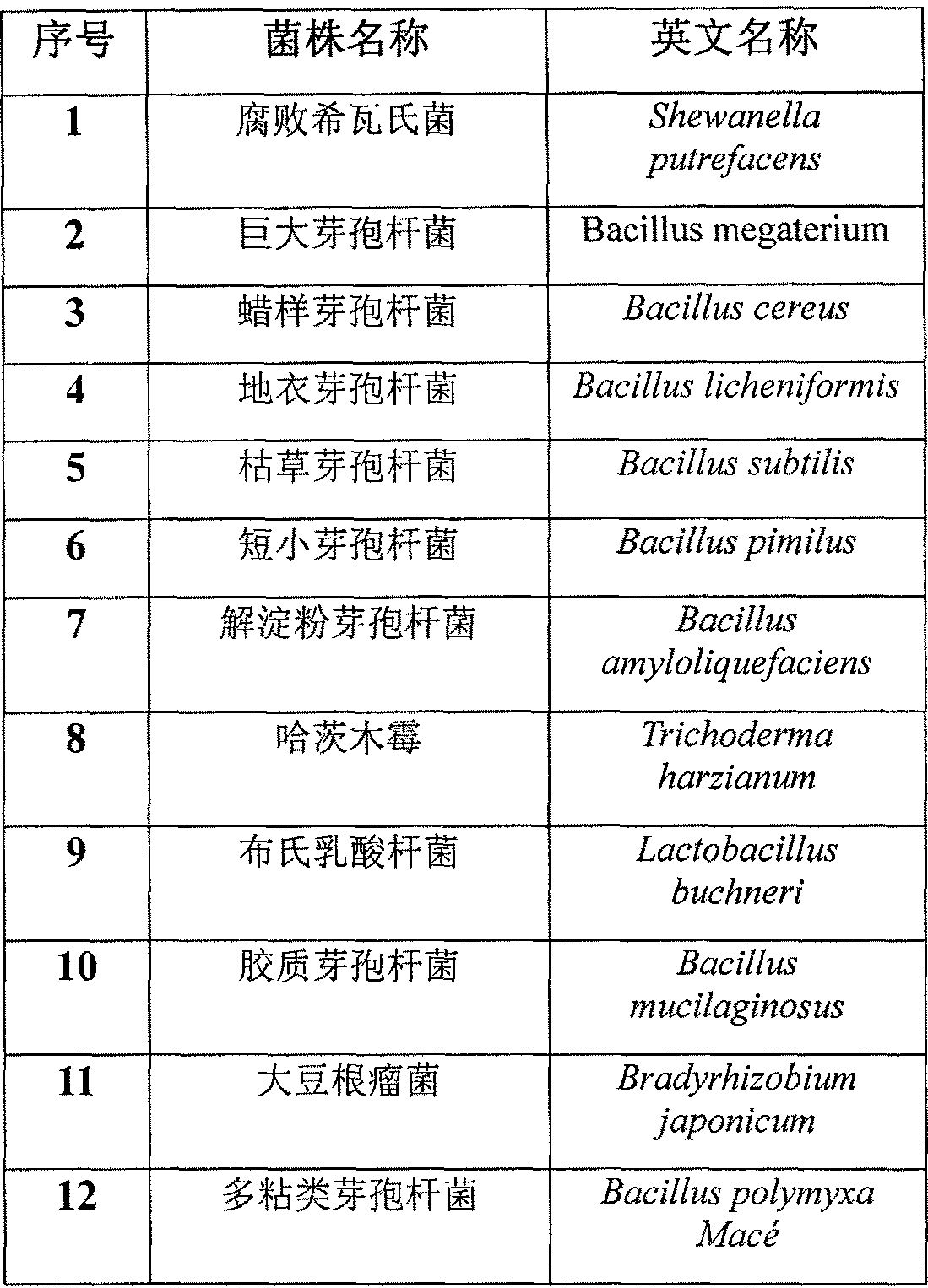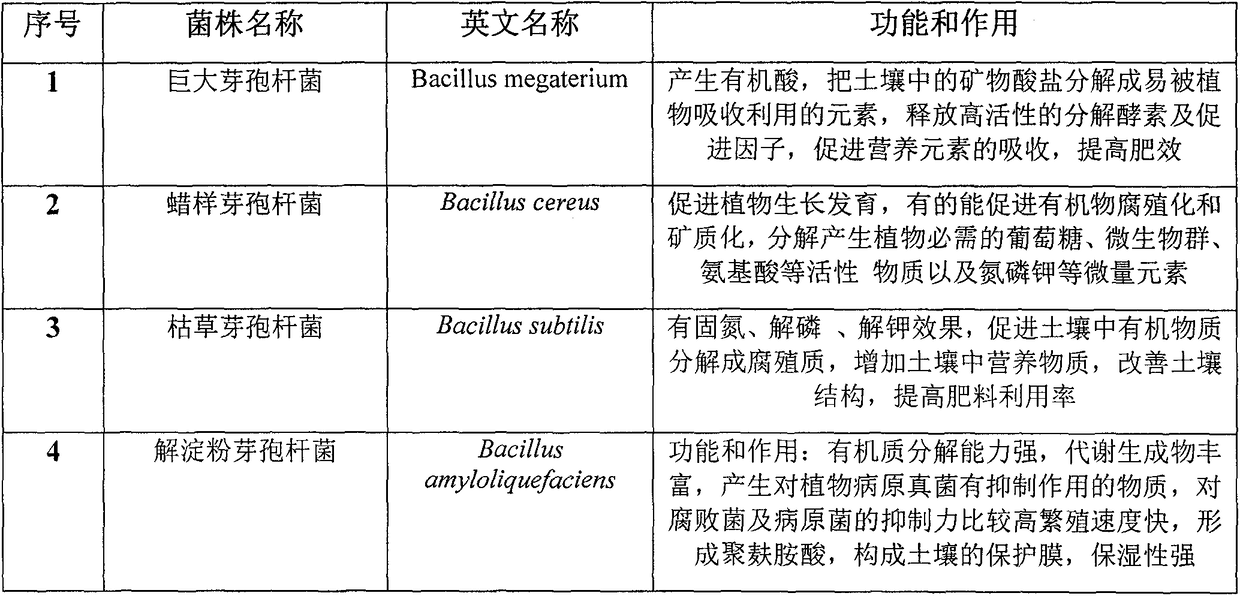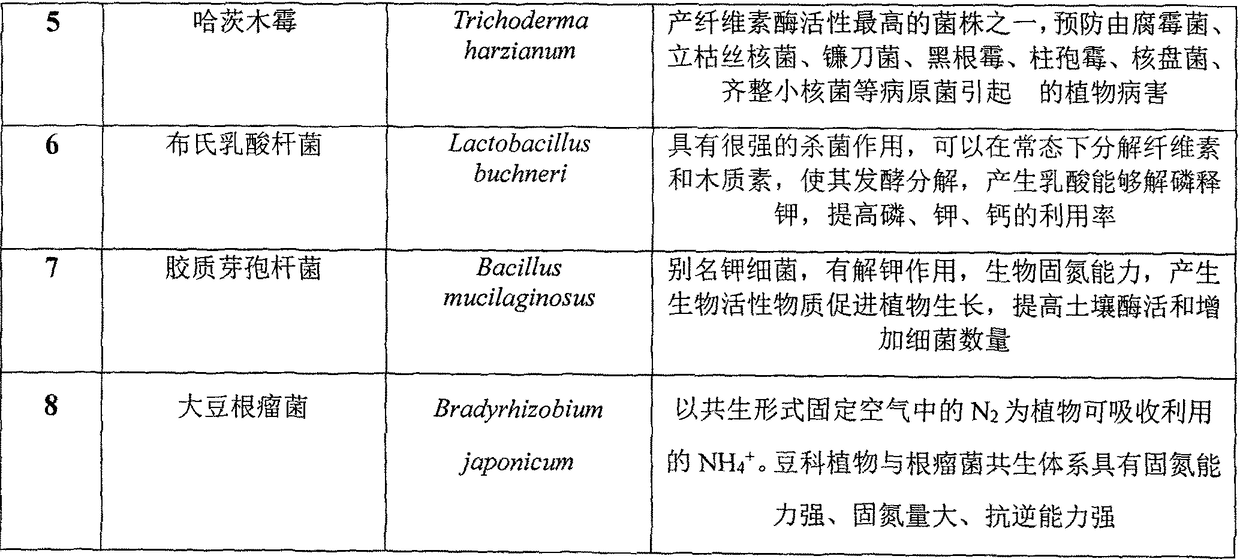Breeding of functional biocontrol bacterial fertilizer microorganisms and preparation of bacterial fertilizer series products
A product and technology of bacterial fertilizer, applied in the field of microbial compound fertilizer and its preparation, can solve problems such as failure to use, straw solid waste pollution, environmental pollution and the like
- Summary
- Abstract
- Description
- Claims
- Application Information
AI Technical Summary
Problems solved by technology
Method used
Image
Examples
Embodiment 1
[0047] Example 1: Preparation of basic "composite flora":
[0048] The present invention takes the fertile black soil from the rhizosphere humus soil under the beauty pine trees of 352 ancient pine trees of more than one hundred years old, and carries out the separation and screening of microbial strains, so as to select the beneficial plant growth microorganisms; Separation and screening of species in order to breed beneficial plant growth microorganisms; from the fertile black soil from the reed rhizosphere soil of Aiwan Lake in Tianjin University, which has grown strong reeds for many years, for the separation and screening of microbial strains in order to select and breed beneficial plants that degrade environmental pollution Growing microorganisms (see references for isolation and screening methods:. Production and application effects of Azotobacter chroococcus and Bacillus megaterium compound fertilizer[J]. Anhui Agricultural Sciences, 2010, 38(28): 15705-15706; Selecting Ba...
Embodiment 2
[0051] Example 2: Isolation and identification of major bacteria
[0052] Dilute the "composite flora" with "pesticide residue medium": straw powder 0.1-100g / L, broth (light), agar 1g / L, potato 10-200g / L, sucrose 1-30g / L , Soy flour 1-15g / L, Ammonium sulfate 0.1-5g / L, Dipotassium hydrogen phosphate 0.1-5g / L, Yeast powder 0.1-6g / L, PH5-8.5 form a medium, after sterilization, spread into a plate , To obtain a monoclonal strain.
[0053] 121 strains were isolated in the experiment, including 69 spore bacteria, 20 anaerobic spore bacteria, 10 lactic acid bacteria, 5 yeasts, 3 Pediococcus, 4 Pseudomonas, 4 actinomycetes, and 6 molds .
[0054] It was amplified by 16SrDNA universal primers and sent to a sequencing company for sequencing, and the strains in Table 1 were identified.
[0055] Table 1 Strain purification, screening and identification results
[0056]
Embodiment 3
[0057] Example 3: The carrier form of bacterial fertilizer and the preparation of bacterial fertilizer in different states
[0058] The bacterial fertilizer carrier of the present invention has three forms, which are determined according to customer needs:
[0059] (1) The microorganism is in a dormant state. The carrier: This form is easy to store. Microbial spores or fossil microorganisms are mixed with dolomite or calcium carbonate or shell powder. The effective viable count is lower than the effective viable count of liquid microbial fertilizer. The shortcomings of microorganisms need to be activated. , And most of the space is occupied by dolomite or calcium carbonate, which requires irrigation and rain to release microorganisms, which may affect the effect of fertilizer use.
[0060] (2) Dry or gelatinous starch fertilizer, most of the bio-fertilizers available on the market now exist in the form of starch. Microorganisms will stay in a dormant state for a certain period of ti...
PUM
 Login to View More
Login to View More Abstract
Description
Claims
Application Information
 Login to View More
Login to View More - R&D
- Intellectual Property
- Life Sciences
- Materials
- Tech Scout
- Unparalleled Data Quality
- Higher Quality Content
- 60% Fewer Hallucinations
Browse by: Latest US Patents, China's latest patents, Technical Efficacy Thesaurus, Application Domain, Technology Topic, Popular Technical Reports.
© 2025 PatSnap. All rights reserved.Legal|Privacy policy|Modern Slavery Act Transparency Statement|Sitemap|About US| Contact US: help@patsnap.com



